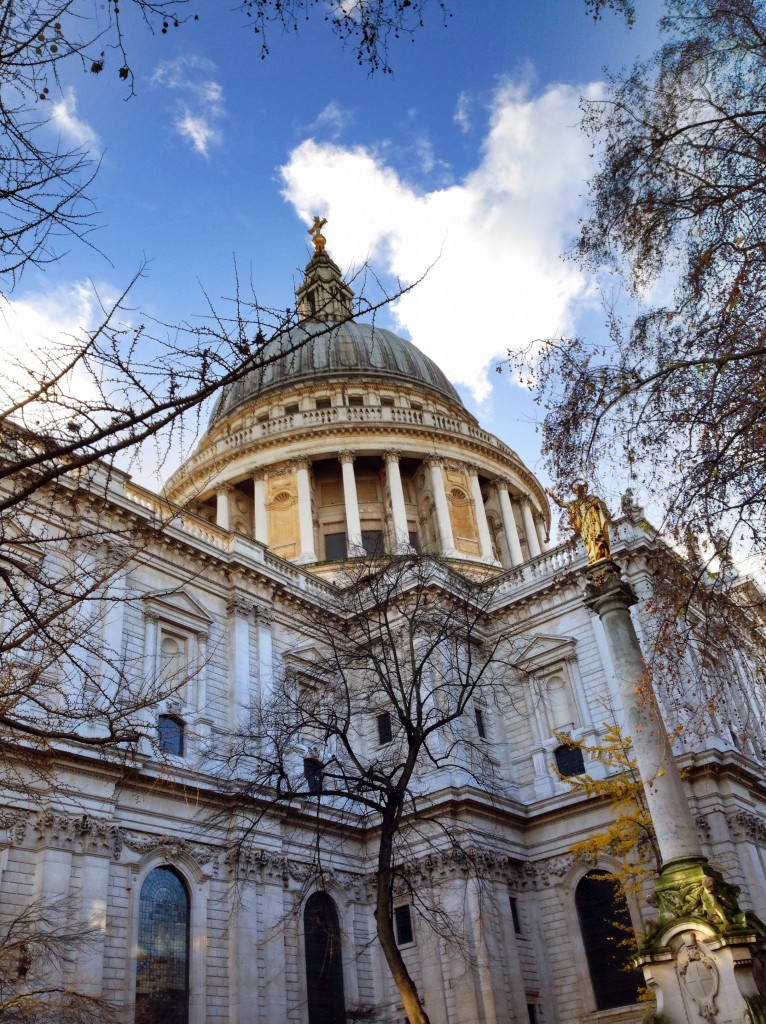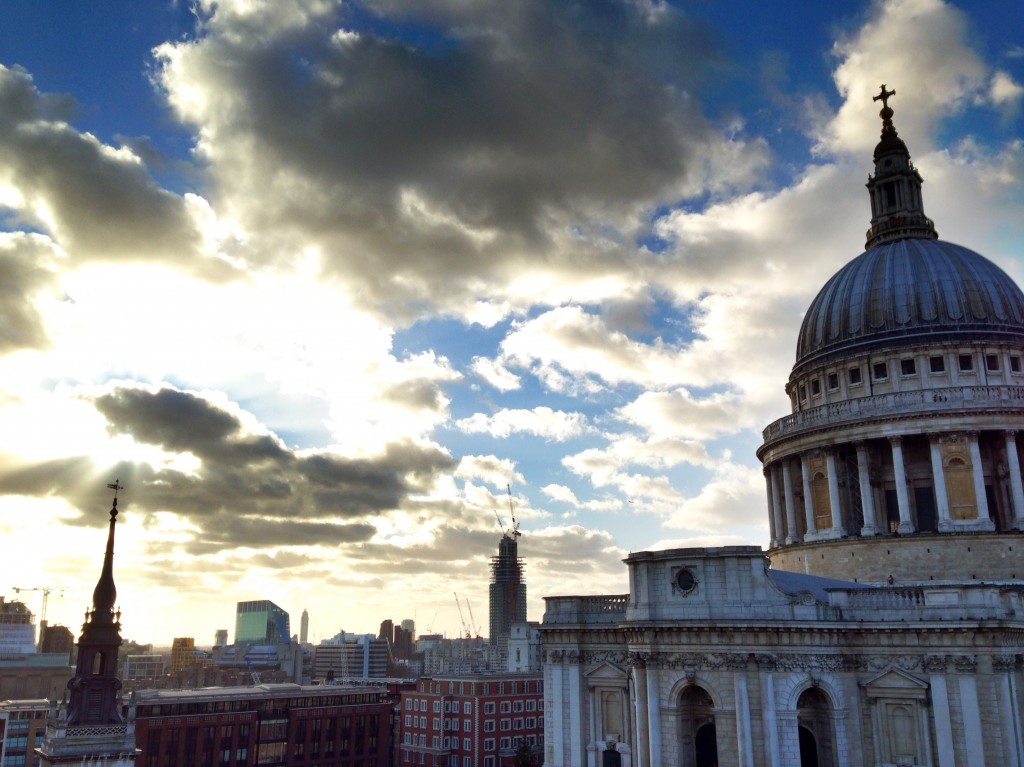Lessons in branding from St Paul’s Cathedral
A 17th century cathedral is not the kind of place you normally expect to learn things about branding, but as in many spheres, what we think is really modern and cutting edge is often just a re-hash of something that was de rigeuer ages ago already.
A few weeks back the barefoot man and I took the formal guided tour of St Paul’s while visiting the tall baby brother in London where he now lives and apart from many fascinating facts about the design, building and monuments inside, as well as the fact that people are no longer buried in churches in the UK, a couple of things stood out:

1. Logos and all
In the interior of the magnificent cupola on are tiled mosaics depicting scenes from the life of St Paul in each leaf of the ceiling. They are truly magnificent and worthy of awe in the artistry, but what really tickled me was the fact that below each of them there is an equally carefully crafted guild crest, in full colour and displayed prominently. “Those,” our lovely very British guide in his suit and red sash explained with great delight, “are the crests of the workers guilds – like the stone masons or the carpenters – that paid for each of the mosaics to be created and put up. They are, effectively, the logos of the brands that sponsored each mosaic.” He paused a moment, smiling up at them, and then continued, “So maybe in a hundred years we’ll have the Nike and the Coca-Cola mosaics up somewhere.”
Branding, it seems, is really a much older practice than we care to remember on a daily basis and perhaps we should relax a little about brand sponsorship and where logos are allowed to be and expected to be – the exchange of awareness for funding is not a new thing, and I think that as long as it’s done in keeping with the aesthetic and philosophical intents of the context, we should actually celebrate the fact that paid-for branding can allow the creation of beautiful, majestic things that edify us all a little.
2. Be careful what you say
If you’re feeling energetic there are several flights of stairs that can be taken up into the heights of St Paul’s. The first 225 stairs take you up to the Whispering Gallery – a narrow circular balcony on the inside of the dome of the cathedral that is accoustically novel in that if you speak in a normal or low voice directly into the wall on the one side of the gallery, a person on the other side of the gallery – across the wide open space with the cathedral floor miles below – can hear you perfectly! It really is quite novel, and our guide told us that several marriage proposals have happened there in that way, though he always wonders if it was the right person hearing and answering the question so being popped!
The challenge, you see, is that anyone anywhere on the gallery can hear everything being said by everyone else – so you can’t be 100% sure who you are hearing, really. So even though you’ve narrowed your audience down to a specific sub-group within the Cathedral, you are still broadcasting that message, effectively. If you want to reach one specific person with one specific question, then broadcasting is never the way to go. And, conversely, if you choose to broadcast a message, even if you’ve narrowed your target market quite well, you still need to really craft the message very carefully to make sure it is clear enough to allow everyone who hears it to discern if it’s meant for them or not. You don’t want the wrong “yes”, after all.

3. Make some space
Apart from all the absolutely fascinating, and quite overwhelming detail and artistry and the many, many stories being sheltered in St Paul’s, one architectural feature really fascinated me. All around the walls of the main cathedral, the crypt and even the stairwells there are classic niches carved in to the stone. Some of them contain statues, which is what I always assumed they were made for, but many of them are empty which I probably would not have questioned had our lovely guide not stopped to point them out to us and explain them. “The empty niche,” he said, pointing one out with as much respect as he had of the Caravaggio painting on the opposite side of the space,”was an architectural addition of the time designed to break up the space of the large tracts of wall and give them texture and allowing for light to play on them.” He paused again, enjoying the idea. “They were never meant to be filled.” He finished off, smiling happily at this.
This idea of actively creating an empty space really stuck by me. It seems so contrary to our modern need to make everything functional as well as beautiful. To fill each space with something. I don’t think I’ve ever created a space in order to NOT fill it, and just allow it to be. And actually I think we, and our brands and our stories and our lives are possibly a little poorer for it. I’m really captivated by the idea of creating a space that is there just to be, to be contemplated and filled only with whatever it evokes in us. A space that we don’t fill, that we allow, that we leave to be empty and maybe, on occasion, be filled with the unexpected magic of the everyday stuff that passes by it.
I think that in 2015 I will try to create more space that is there to allow emptiness – for my brands to allow space that is not controlled or purposed, but just exists for the joy of itself; for my days to create spaces that enjoy their emptiness; and for myself to craft things simply for the joy of their own form and being, and not to achieve anything else at all.
May 2015 bring you your own empty niche, and may you enjoy the magic of being and breathing and, even just for a moment, not filling things up.


